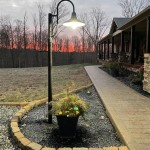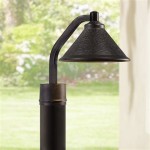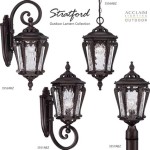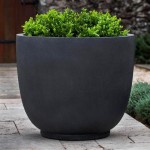How to Weatherproof Painted Wood for Outdoors
Painted wood is a popular choice for outdoor projects, from fences and decks to furniture and garden structures. However, exposed wood is vulnerable to the elements, which can cause damage and shorten its lifespan. Weatherproofing painted wood is essential to protect it from the damaging effects of rain, sun, and humidity. This article will guide you through the steps of effectively weatherproofing your painted wood for a lasting finish.
Choosing the Right Paint
The first step towards weatherproofing your painted wood is selecting the appropriate paint. Not all paints are created equal, and some are better suited for outdoor use than others. Look for paint specifically designed for exterior use, as these are formulated to withstand the elements. Key features to consider include:
- Water-based or oil-based: Water-based paints are generally easier to clean up and tend to have lower VOCs. However, oil-based paints offer better durability and resistance to moisture, making them ideal for high-traffic areas and harsh weather conditions.
- UV resistance: The sun's ultraviolet rays can damage paint pigments, causing fading and discoloration. Choose a paint with good UV resistance to protect your wood from fading and prolong its lifespan.
- Moisture resistance: Moisture can penetrate wood, causing it to rot and warp. Look for a paint with a high moisture resistance rating to ensure your wood stays protected.
- Acrylic or alkyd: Acrylic paints offer excellent water resistance and durability, while alkyd paints provide a hard, durable finish. Both are good choices for outdoor use.
It's crucial to research and choose a paint brand and type that meets your needs and the specific conditions your wood will be exposed to. Consulting with a paint specialist at your local hardware store can provide valuable advice on selecting the best paint for your project.
Preparing the Wood
Proper preparation is key to ensuring that your paint adheres properly and provides effective weatherproofing. Follow these steps to prepare your wood for painting:
- Clean the wood: Remove any dirt, debris, dust, or loose paint with a brush, scraper, or pressure washer.
- Sand the wood: Sanding the surface helps create a smooth base for the paint to adhere to. Use sandpaper with different grits, starting with a coarser grit and finishing with a finer grit.
- Repair any damage: Fill in any cracks, holes, or gaps with wood filler. Ensure the filler is compatible with the type of wood and paint you are using.
- Apply a primer: A primer helps the paint adhere better and provides a more even finish. Choose a primer that is compatible with your chosen paint type and formulated for outdoor use.
Thorough preparation before painting will significantly contribute to the longevity and durability of your weatherproofing efforts. Carefully addressing any imperfections in the wood will ensure a smooth and long-lasting finish.
Applying the Paint
Now that your wood is prepped, it's time for the paint! The application process is crucial for achieving a proper weatherproof seal. Here's how to apply paint effectively:
- Use a high-quality brush or roller: A good-quality brush or roller will help achieve an even coat and minimize brushstrokes.
- Apply thin, even coats: Thin coats of paint allow for proper drying and prevent the paint from cracking or peeling. Apply multiple coats, allowing each coat to dry completely before applying the next.
- Follow the manufacturer's instructions: Every paint has specific drying times and application guidelines. Follow the manufacturer's instructions carefully to ensure the paint adheres properly and achieves its maximum weatherproofing potential.
- Consider a sealant: After your paint has fully dried, consider applying a sealant. Sealers create an additional layer of protection against moisture and UV damage, further enhancing the weatherproofing of your painted wood.
Taking your time and paying attention to detail during the painting process will ensure that your paint provides effective weatherproofing for years to come. Remember that a properly applied paint job is as important as the type of paint you choose.
Maintaining Your Weatherproofing
Once your painted wood is weatherproofed, regular maintenance is essential to keep it looking its best and extending its lifespan. Follow these tips for maintaining your weatherproofing:
- Clean regularly: Dust, dirt, and debris can accumulate on painted wood and cause discoloration and damage. Clean your painted wood periodically using a mild soap and water solution.
- Inspect for damage: Inspect your painted wood for any cracks, chips, or peeling paint. Repair any damage promptly to prevent it from worsening.
- Repaint as needed: Over time, paint can fade and lose its protective qualities. Repaint your wood every few years to maintain its weatherproofing and aesthetic appeal.
Regular maintenance will ensure your painted wood stays protected and looks its best for years to come. Remember that a little effort now can prevent major repairs and costly replacements in the future.

How To Seal Painted Wood For Outdoor Use The Backyard Pros

How To Waterproof Wood With Oil Sealant Or Stain And Sealer Bob Vila

How To Seal Painted Wood For Outdoor Use 7 Easy Steps

How To Seal Painted Wood For Outdoor Use 7 Easy Steps

How To Seal Outdoor Painted Wood 4 Steps Diy Geeks

How To Seal Painted Wood For Outdoor Use 7 Easy Steps

How To Waterproof Wood With Oil Sealant Or Stain And Sealer Bob Vila

How To Seal Painted Wood For Outdoor Use 7 Easy Steps

How To Seal Painted Wood For Outdoor Use Mellowpine

How To Seal Outdoor Painted Wood 4 Steps Diy Geeks
Related Posts







